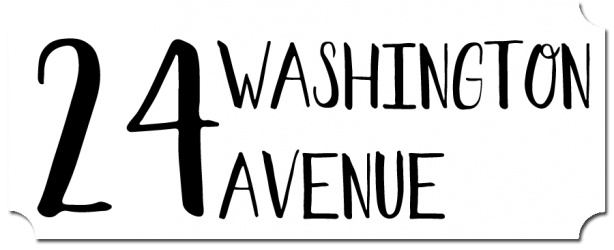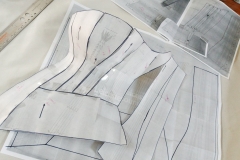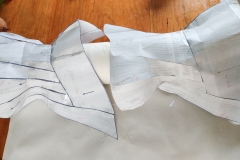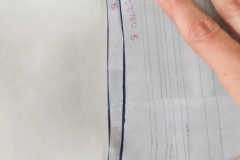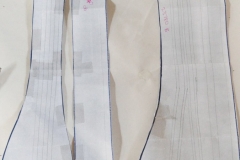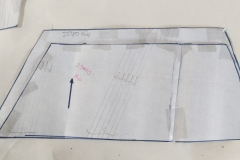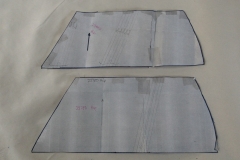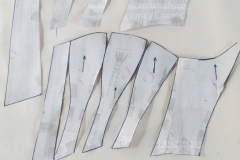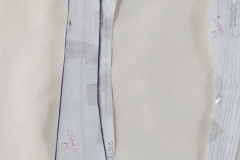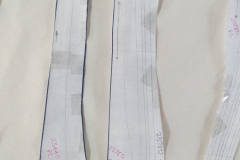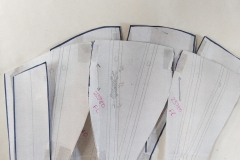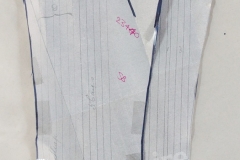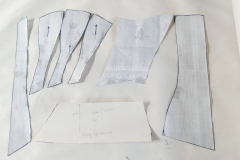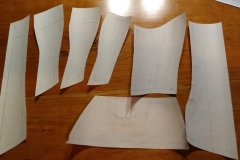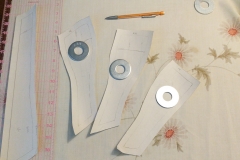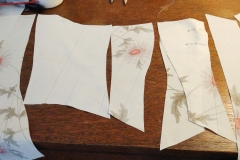Quite a few years ago, I made a corset.
I made it out of a heavy-weight burlap-style material. I had no intent on wearing it close to my skin. It was foundation. It was support.
I used coat hangers (because this was prior to the recent popularity of corsets, and busks were hard to find (and cost-prohibitive at that time), approximately 30 hooks and eyes, and some commercial 1/4-inch ribbon for lacing.
It worked!
But I wanted more.
video above: narrative of the first phase of this project
Background
I found a “waist training corset” on e-bay for approximately $10 with free shipping.
Great! I figured that I would buy it, rip it apart, and use the insides for my own construction. I never ripped it apart. Instead, I wore it.
Gradually, I could lace it tighter and tighter.
I would wear it for hours.
But doing just about ANYTHING in it was near-impossible.
Bending over to empty the dishwasher? Forget it.
In fact, forget bending over at all.
Sitting in anything other than a dining chair was super uncomfortable.
And for goodness sake – don’t even think about falling into a semi-reclined posture on a comfy chair, because you’ll feel like you’re suck in a pit!
So my active non-sedentary lifestyle relegated the corsets (yes, I ended up buying a few of those cheapies – for parts, I told myself) to my closet. Preoccupations meant that I didn’t take the time to dress up much … and subsequently, the foundation layer that a corset would provide wasn’t really necessary.
The Symington Collection and the Pretty Housemaid
I forget who it was or how it happened, but I found out about the Symington Corset Collection from someone online.
Talk about treasure-trove!!
When, during my various research efforts, I learned about the Pretty Housemaid corset, I was immediately smitten.
I am very active, and the limited movement afforded by the corsets I’d been exposed to so far rather put me off using them on a regular basis.
Further reading, where the obvious (but seemingly overlooked) point that a corset was to them as a bra is to us, made me thing that perhaps I’d been wearing them totally wrong.
Corset-wearing is not synonymous with tight-lacing!!
Photo of the Pretty Housemaid corset
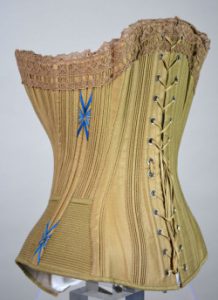
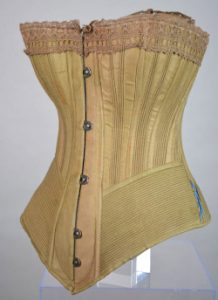
source: tumblr
Pattern
Unfortunately, there were no references I could find to the actual Pretty Housemaid (Can we just call it PH for short? Thanks!) pattern within the collection above. I looked through the patterns (of which there are 109!) and couldn’t find an exact match. I then started cataloguing all of the patterns by panels and style (but that’s probably a post in itself).
In the end, I found the following resources online:
- http://poisonedkitty.blogspot.com/2015/06/corset-tutorial-pretty-housemaid.html
- https://foundationsrevealed.com/225-historical-corsetry/1890s-corset-patterns/809-a-very-pretty-housemaid-corset (which advises using pattern 131 / base reference 18718) on the Symington page
- https://corsetworkshop.wordpress.com/2013/06/20/pretty-housemaid-corset-1890/ larger photos can be viewed here
- https://artificialartifacts.wordpress.com/2016/02/27/the-symington-pretty-housemaid-corset1890/
The very wise Bernadette Banner has reminded us that no garment from the past can be perfectly reproduced, and that each of us can only make our own interpretation.
So, please take the following with a pinch of salt.
My Interpretation (and why I didn’t use any of the above patterns)
Most people have used Jill Salen’s ‘Corsets’ book.
After looking at the layout of every single corset on the Symington Collection page (yes – all 109), the are ALL oriented the same way.
The blogs that showed Ms. Salen’s book open at the pattern page shows the third bust panel running from a “top left” down to a “bottom right” diagonal.
None of the Symington Patterns show this. They run from a “top right” to a “bottom left” diagonal.
Does it matter? I don’t know.
But it conflicted with what I saw in the original garment.
I half-expect that the actual collection of patterns had not been published when ‘Corsets’ was written, and thus the pattern was made after viewing the original – but I am speculating.
Pattern 131 / 18718 (the other recommendation) is a 2-panel bust pattern underneath of which is the hip panel. The side panel runs from top to bottom.
In the photos of an original PH corset, you can see a 3-panel bust organization with with the hip panel running underneath the bust panels AND the side panel.
Thus, I didn’t feel that pattern 131 was a suitable match either.
Call me picky.
So I figured that I’d get creative.
I ended up mixing and matching two patterns: 23780 for the side and back, and 23440 for the front and bust.
I overlaid the hip panels from both to find a happy medium, and then cut and made my mockup.
I should point out that I used zero structural support in the mock-up. No cording. No boning. This is why the back panels refuse to stand straight up.
At the end of this, I disassembled the mock-up and prepared the final pattern pieces.

